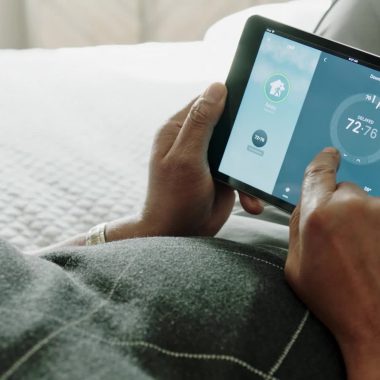Investing time in regular home maintenance could save you tens of thousands of dollars in the long run, not to mention the headaches! Here we created a home maintenance checklist that will help you keep your new home looking its best for years to come!

Don’t forget to look up
Your home’s roof is most vulnerable to bad weather, so you will want to keep your eyes peeled for things like missing shingles, discoloration, and damage. Keeping your roof clean is critical to preventing more expensive problems from arising down the road. (Remember, roof issues may be covered by your homeowner’s insurance policy if caused by a fallen tree or windstorm, but general wear and tear.)
Keep your mind in the gutter
Gutters are your main defense in protecting your home’s foundation and siding against the elements. Full or damaged gutters can cause water to form around your home, which can lead to cracks or even structural failure! To avoid this, be sure to keep your gutters clean and free from debris, especially after a storm.
Don’t give your siding the side eye
Your siding is the protective material on the exterior of your home and it’s important to clean it every season to keep it fresh and functional. You can use a commercial siding cleaner or a simple mixture of dish soap and vinegar. (Just avoid using any high water pressure!)
Weatherproof your home from the elements
Weatherproofing your windows and doors is a great way to protect the inside of your home and conserve energy. Take some time to use weatherstripping foam, felt, vinyl, or tape to seal air leaks around doors and windows. For any cracks and gaps, caulk can be used to seal joints and seams to prevent water leaks. When your home gets hit with bad weather, you’ll be glad you did!

Keep your pipes squeaky clean
Preventative measures are safer (and easier!) than dealing with an emergency clean-up, so to keep your pipes squeaky clean, we recommend following some of these best practices to avoid calling a plumber.
- Do not pour fats and oils down your drain. They can accumulate, harden, and clog your pipes. It is best to let them cool, transfer to a container and toss in the trash.
- While a store-bought clog remover is tempting, they contain chemicals that could damage your pipes and lead to expensive repairs down the road.
- If you have a clog, try using a plunger or a drain snake to loosen it yourself before calling in a professional.
Inspect your sealants
Every year or two, inspect any sealants around your sinks, toilets, and bathtubs. These sealants, such as grout and calking, will show signs of wear over time so it is recommended to inspect them every year for peeling or mildew.
Regularly replace your HVAC filter
You may think of your HVAC as that thing that controls the temperature, but it also plays an important role in your air quality around the house! The simplest thing you can do to prevent damage to your HVAC system is to replace your filters every month or so.
Avoid giving your fridge the cold shoulder
You know that elastic strip around your refrigerator door? That’s called a gasket and it seals in the cold air so your food stays fresh. You’ll want to check your gasket regularly to ensure your fridge and freezer have a tight seal. (Your homeowner’s insurance will most likely cover your household appliances if there’s damage caused to them during a fire or windstorm, but if there’s a general electrical malfunction, you might not be covered.)
In addition to regularly checking on your home for maintenance, you may also want to take an occasional look at your homeowner’s insurance policy. Your coverage needs might change over time, so it pays to ensure you’re getting the right coverage and to make changes if needed.





